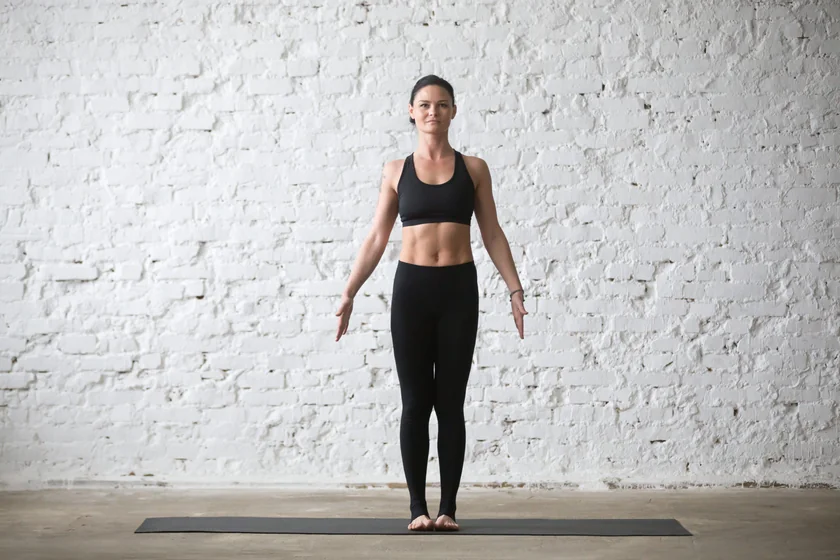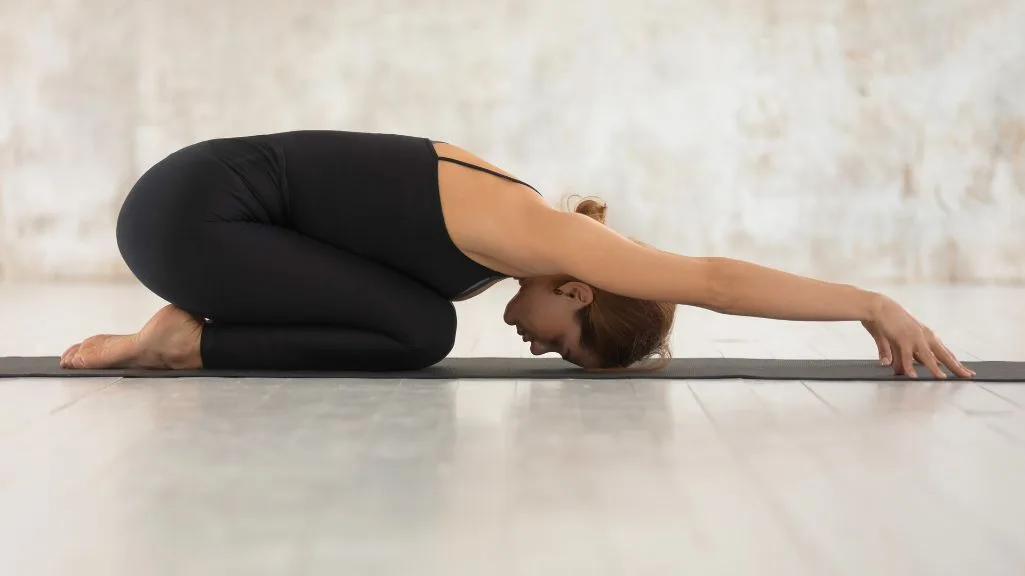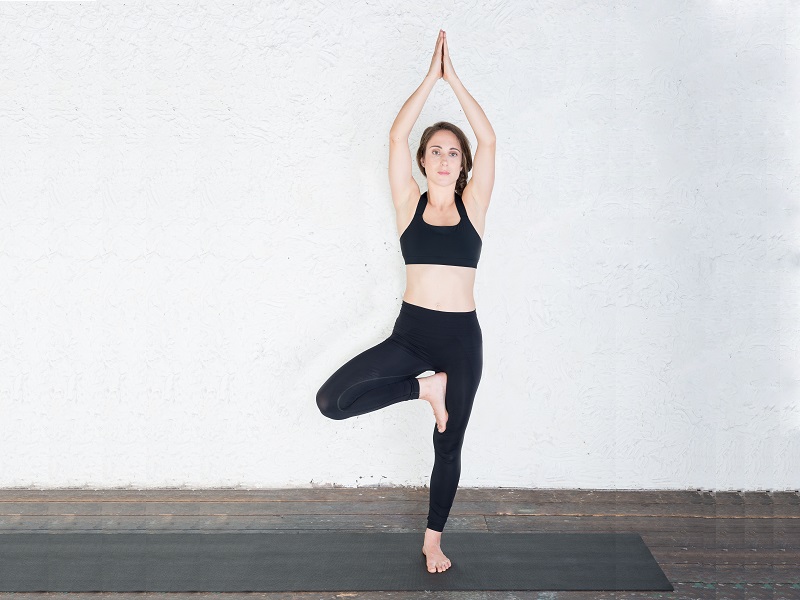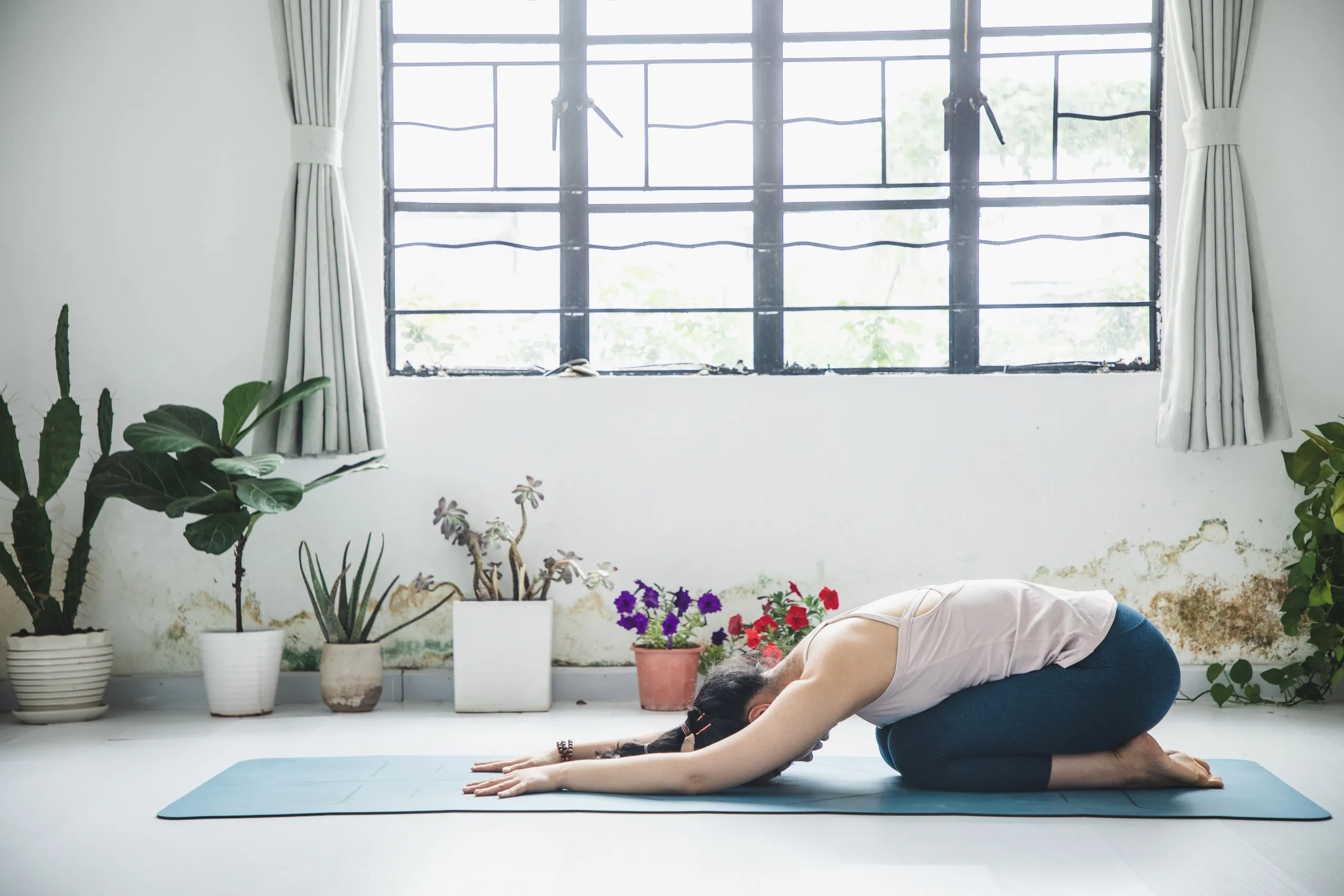Yoga is a wonderful practice that benefits both the body and the mind. It improves flexibility, builds strength, reduces stress, and promotes overall wellness. For beginners, starting yoga can seem intimidating, but the truth is, anyone can start with simple poses that require minimal equipment and space. Here are seven easy yoga poses that are perfect for beginners, helping you build a strong foundation for your practice.
1. Mountain Pose (Tadasana)

The Mountain Pose is the starting point for almost every yoga routine. It may look simple, but it teaches proper posture and grounding.
How to do it:
- Stand with your feet together, big toes touching, and heels slightly apart.
- Distribute your weight evenly across both feet.
- Engage your thighs and lift your kneecaps slightly.
- Lengthen your spine, roll your shoulders back, and let your arms rest by your sides.
- Take deep breaths, feeling the connection between your body and the ground.
Benefits: Improves posture, strengthens thighs, knees, and ankles, and promotes a sense of calm.
2. Downward Facing Dog (Adho Mukha Svanasana)
A staple in many yoga practices, the Downward Facing Dog stretches your entire body and builds strength in the arms and legs.
How to do it:
- Start on your hands and knees, wrists aligned under shoulders, and knees under hips.
- Spread your fingers wide and press firmly into the mat.
- Exhale and lift your hips toward the ceiling, straightening your legs as much as possible.
- Keep your head between your arms, ears aligned with your upper arms.
- Hold the pose for 5–10 breaths.
Benefits: Stretches the hamstrings, calves, and shoulders, strengthens arms, and energizes the body.
3. Child’s Pose (Balasana)

Child’s Pose is a gentle resting pose that allows your body to relax and your mind to calm.
How to do it:
- Kneel on the floor, touch your big toes together, and sit on your heels.
- Separate your knees about hip-width apart.
- Exhale and fold forward, extending your arms in front of you or resting them alongside your body.
- Rest your forehead on the mat.
Benefits: Relieves stress and fatigue, gently stretches the hips, thighs, and ankles, and promotes relaxation.
4. Cat-Cow Pose (Marjaryasana-Bitilasana)
This flowing movement warms up the spine and increases flexibility in the back.
How to do it:
- Start on your hands and knees, wrists under shoulders, knees under hips.
- Inhale, arch your back, lifting your head and tailbone toward the ceiling (Cow Pose).
- Exhale, round your spine, tucking your chin to your chest and tailbone under (Cat Pose).
- Repeat for 5–10 breaths.
Benefits: Improves spinal flexibility, relieves tension in the back and neck, and massages internal organs.
5. Warrior II (Virabhadrasana II)
Warrior II is a foundational standing pose that strengthens the legs and improves focus.
How to do it:
- Stand with feet about 3–4 feet apart.
- Turn your right foot out 90 degrees and left foot slightly in.
- Bend your right knee over your ankle, keeping your left leg straight.
- Stretch your arms out to the sides, parallel to the floor, and gaze over your right hand.
- Hold for 5–10 breaths and switch sides.
Benefits: Strengthens legs, opens hips and chest, and builds stamina and concentration.
6. Tree Pose (Vrksasana)

Tree Pose is excellent for improving balance and concentration while stretching the body.
How to do it:
- Stand tall in Mountain Pose.
- Shift your weight onto your left leg and place the sole of your right foot on your inner left thigh or calf (avoid the knee).
- Bring your hands together at your chest or extend them overhead.
- Focus on a point in front of you and hold for 5–10 breaths.
- Switch sides.
Benefits: Improves balance, strengthens legs and core, and enhances focus.
7. Seated Forward Bend (Paschimottanasana)
This calming pose stretches the back and hamstrings while encouraging relaxation.
How to do it:
- Sit on the floor with legs extended straight in front of you.
- Inhale, lengthen your spine, and exhale, fold forward from the hips, reaching for your feet or shins.
- Keep your back straight and avoid rounding your spine excessively.
- Hold for 5–10 breaths, breathing deeply.
Benefits: Stretches the spine, shoulders, and hamstrings, relieves stress, and improves digestion.
Starting with these seven simple yoga poses can make your introduction to yoga safe, enjoyable, and rewarding. Remember, yoga is about progress, not perfection. Listen to your body, breathe deeply, and practice regularly. Over time, you’ll notice improvements in flexibility, strength, balance, and overall well-being.



